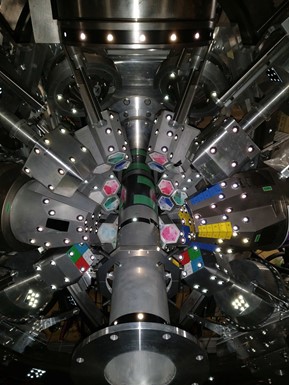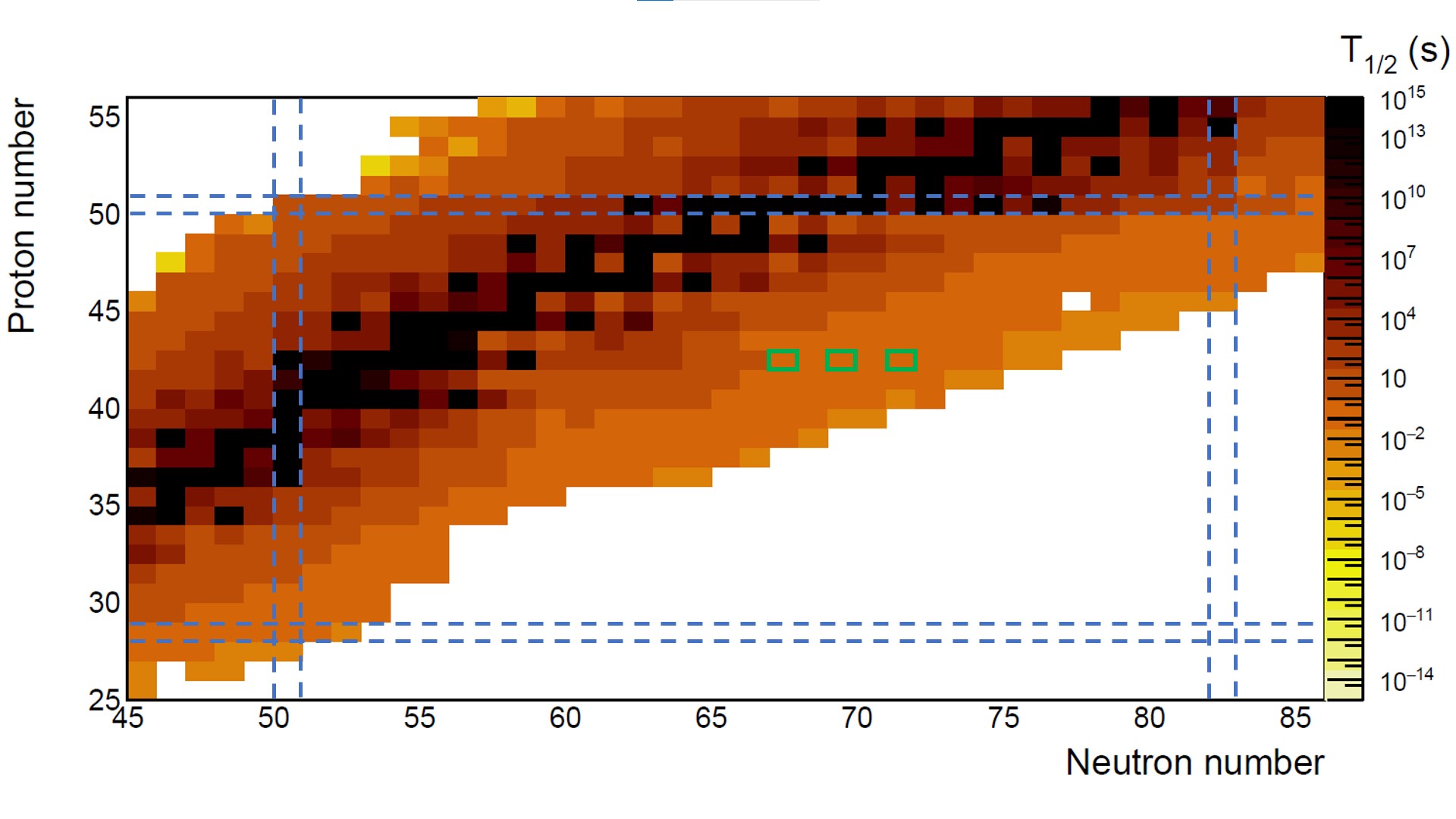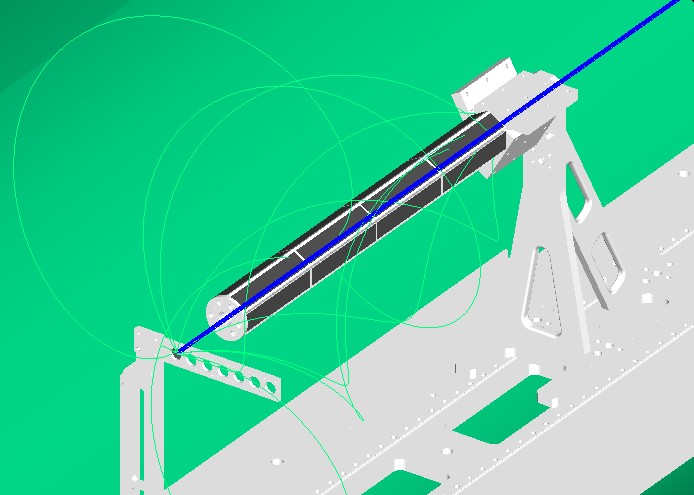Experiments with radioactive isotope beams have revealed many interesting features of the strong nuclear interaction, not usually found in stable isotopes. Below is a non-exhaustive list of research topics with emphasis on nuclear structure that are being pursued at CENS.

Figure 1: Picture of the HiCARI array at RIBF for in-beam 𝛾-ray experiments.
Isotopes of zirconium (Zr) with semi-magic atomic number 40 form one of the isotopic chains with a dynamic nuclear shape transition. The collective behavior of Zr nuclides is very much suppressed at neutron number 50, where 90Zr exhibits properties of a doubly magic nucleus. On the other hand, a sudden onset of nuclear deformation appears at N = 40 and 60 due to the strong proton-neutron interaction between the overlapping partner 𝜋1g9/2 and 𝜈1g9/2 (𝜈1g7/2) intruder orbitals. These strong shape transitions happen in Zr (Z = 40) and Sr (Z = 38) nuclei which are located at the mid-shell between N = 50 to 82. This statement can be supported by neighboring nuclides of Kr (Z = 36) and Mo (Z = 42) which show a smooth shape evolution pattern in terms of the quadrupole deformation. In order to investigate more evidence of nuclear shape and shell evolution in Zr isotopes, a knock-out reaction experiment was carried out at the Radioactive Isotope Beam Factory (RIBF) in RIKEN, as part of the High-resolution Cluster Array at RIBF (HiCARI) project (see Fig. 1). Detailed spectroscopy of 110Zr with N = 70 will be analyzed by deducing the lifetimes of the excited states to reveal the underlying nature of the quadrupole deformation and collective motion. Moreover, it is also a desired goal to uncover any evidence of shape coexistence in this isotope, for example, a triaxial deformation.
One particular neutron-rich region in the chart of nuclides, found between the shell closures at Z=28, 50 and N=50, 82, has been of interest for many nuclear physicists. The isotopes in this region are expected to have complicated energy level configurations. Many predictions have been made with various theoretical models, but the structural characteristics of those nuclei are still not well understood. For instance, new phenomena such as unexpected nuclear isomers and prolate deformations in molybdenum (Mo, Z = 42) isotopes were recently observed in recent experiments thanks to the enhanced rare-isotope beam intensity and advanced detectors. In particular, CENS is involved in the study of the structure of odd-mass 109,111,113Mo isotopes via β-delayed γ-ray spectroscopy so as to enhance experimental knowledge about the energy level evolution of nuclei in this mid-shell region. Such isotopes are still not close to the neutron drip line, and new rare isotope beam facilities are expected to enable investigations of even more neutron-rich nuclei.

Figure 2. Chart of nuclides around the magic numbers Z=28, 50 and N=50, 82. 109,111,113Mo are highlighted as green boxes.
Shell robustness and new magic numbers in exotic nuclei far from stability are active research areas in nuclear physics. In particular, CENS is a forerunner in global efforts to characterize shell evolution and nuclear deformation along the tin (Z = 50) isotopic chain, towards the doubly-magic 100Sn. One of the experimental probes of nuclear collectivity and core polarization is E2 transition rates, and data analysis on a series of Coulomb excitation experiments on neutron-deficient Sn isotopes at HIE-ISOLDE is being carried out. The results are expected to reduce the literature uncertainties on B(E2) values by several factors, and elaborate on the first attempts to measure quadrupole moments of the semi-magic nuclei. In addition, a set of nucleon transfer experiments on light Sn isotopes has been approved at HIE-ISOLDE (see Fig. 3). Spins, parities and spectroscopic factors of single-particle dominated states in light, unstable odd-A Sn nuclei will be determined for the first time, in order to ascertain the trends of effective single-particle states and energies of neutron orbitals above the N = 50 shell.

Figure 3. Geant4 simulation of (d,p) reactions in inverse kinematics with an ISOLDE Solenoidal Spectrometer (ISS).